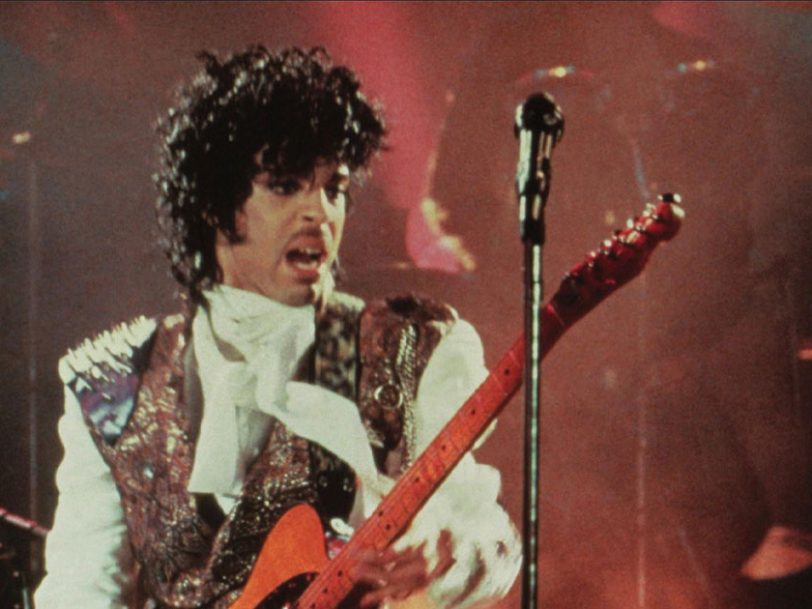Filling whatever hours were left in the day, Prince’s band, plus the members of The Time and Vanity 6, were called to attend acting and dance classes at the warehouse, as a teacher from the local Minnesota Dance Theater gave everyone a crash course in the essentials, ahead of filming Purple Rain in November. “It could have been a movie in itself,” Lisa Coleman, Prince’s keyboardist, said in Lives Of The Musicians: Prince. “We were a bunch of goofballs going into a dance class with trench coats on and jumping through the air.”
Continuing at a gruelling pace throughout the spring and early summer, the hard work would begin to reap rewards when Prince staged a fundraising concert in Minneapolis. Billed as “A special benefit for the MN Dance Theater”, the show, booked for 3 August 1983, would be held at First Avenue, a local venue where DJs spun funk tunes on Thursday nights, and where Prince – who would often attend as a punter letting off steam on the dancefloor – often brought newly recorded songs to trial run on unsuspecting crowds. Soon to become an indelible part of Prince’s story, the venue was the perfect place for him to debut not only some of his new music, but also his new-look band, which included a fresh-faced guitarist who was about to undergo trial by fire.
Forming The Revolution: “She’s funky as hell, plus she can play like Joni Mitchell”
Dez Dickerson had been part of the group since the release of Prince’s self-titled second album, and he remained Prince’s guitar foil through the Dirty Mind, Controversy and 1999 eras – even being trusted to come up with the evocative guitar solo on Prince’s hit song Little Red Corvette. Yet by the time work began on Purple Rain, Dickerson was ready to strike out on his own. Happy to support his friend, Prince would give Dickerson’s band, The Modernaires, a cameo in the movie, during which they, too, appeared on the First Avenue stage, playing Dickerson’s original song (I Want 2 B A) Modernaire.
Prince didn’t need to look far to find Dickerson’s replacement. Just out of high school, 19-year-old Wendy Melvoin, a childhood friend and, at the time, girlfriend of Lisa Coleman, had been travelling with Coleman on the 1999 Tour. After Prince heard Melvoin playing guitar in Coleman’s hotel room he asked her to sit in on soundchecks whenever Dickerson was absent. “All of a sudden, this little girl comes in and she’s funky as hell, plus she can play like Joni Mitchell,” Coleman told this author of Melvoin’s appeal. Realising Melvoin could be a female Keith Richards to his Mick Jagger, Prince, Coleman remembers, “was just like, ‘I’ve got my answer.’”
Yet despite months of rehearsal, when it came time to making her stage debut as part of what would soon be christened The Revolution, Melvoin was a self-confessed “nervous wreck”. “I was well prepared musically,” she recalled in an oral history compiled for the Minneapolis Star Tribune by Jon Bream and Chris Riemenschneider, in 2004. “But I felt like I had to fill Dez’s shoes. People would be looking at me, ‘Who’s this young white chick that replaced this cool crazy-looking Black guy on guitar?”
In the event, Melvoin needn’t have worried.
The First Avenue concert: “It was super intense and dark and sweaty”
“We were so well rehearsed that any opening-night jitters melted away after the first song was played,” Prince’s keyboardist Matt “Dr” Fink asserted years later. Soon to be heard blaring from cars, homes and clubs, the churchy organ sound that opens Purple Rain was the first thing the sell-out crowd at Minneapolis’ First Avenue club heard on 3 August 1983, ringing out in the darkness until Prince introduced his new music and his new band, lifting the curtain on a whole new era with the words “Dearly beloved, we are gathered here today to get through this thing called life”.
Perfectly coiffured, wearing a high-necked shirt under a metallic jacket, Prince ripped power chords out of his famed Hohner guitar, delivering the previously unheard Let’s Go Crazy as if it were already the stadium anthem it would soon become. With Melvoin sidling up to him in a white lacy minidress for the barrage of riffs that close the song, it was clear that much of the choreography that would be immortalised in the Purple Rain film was already in place in Prince’s live show.


